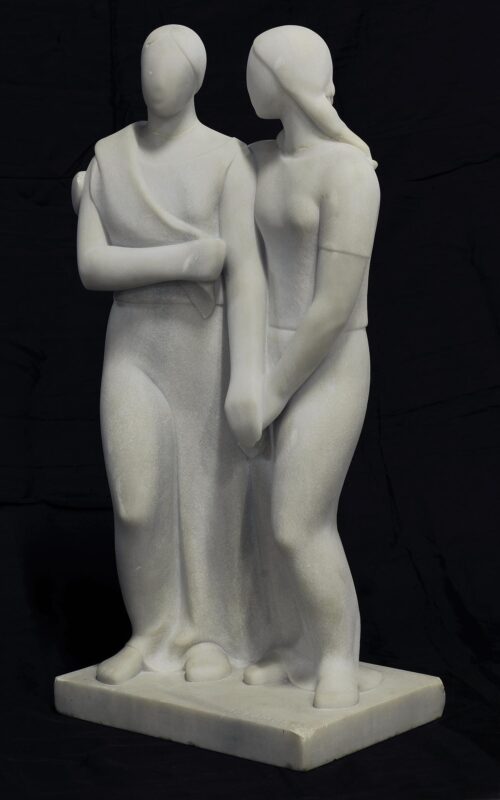
Tombros Michael (1889 - 1974)
Two Friends, 1929
His first contact with sculpture was in the workshop of his father, who was a marble sculptor. In 1903, he enrolled in the School of Arts, where he studied sculpture with Georgios Vroutos and for a short while with Lazaros Sochos. He also attended the drawing courses of Dimitrios Geraniotis, Alexandros Kalloudis and Georgios Iakovidis, while at the same time he worked at N.M. Perakis’s marble sculpture workshop. Graduating from the Athens School of Arts in 1909, he established his own studio in Athens a year later. In 1914, on scholarship from the Georgios Averoff Estate, he went to Paris, where he studied at the Academie Julian with Henri Bouchard and Paul Landowski. After his return in 1919, he was appointed visiting professor at the Department of Plastic, School of Architecture, National Technical University of Athens. He travelled, among other places to Olympia, where he studied the Zeus temple sculptures, and Paris. In 1925, he visited Paris for the fourth time and stayed until 1928. During this sojourn in the French capital he had a busy exhibition agenda and was also especially creative, as he first came into contact with the avant-garde. During 1933-1934, he published “20ός Αιώνας” [20th Century], the first magazine focusing on the visual arts in Greece. In 1938, he was appointed regular professor at the 2nd Workshop of Sculpture of the Athens School of Fine Arts, where he taught until 1960 and was director from 1957 to 1959. In 1967, the Academy of Athens awarded him the Excellence of Arts and the following year elected him a member.
His work was presented in Greece and international solo and major group exhibitions, among them exhibitions with the “Omada Techni” [Art Group], the Salon des Artistes Francais, the Salon des Tuileries and the Salon des Independants in Paris, the 1937 Paris International Exhibition, the Biennale of Venice in 1934, 1938 and 1956, and the Sao Paulo Biennale in 1955. In 1959, a retrospective exhibition of his work was mounted at the American Information Service premises and at the Hellenic American Union in 1972.
Michalis Tombros had a major contribution to Modern Greek sculpture. Through the publication of “20th Century” and a wealth of articles in the daily and periodical press as well as his teaching activity at the School of Fine Arts, he helped disseminate avant-garde movements in Greece. His creative career was characterized by a remarkable dualism. While always remaining anthropocentric, he created free works, particularly of female figures, mainly reflecting Aristide Maillol’s plastic style, and commissioned works, in which he generally adopted an approved academic style. On the other hand, his desire to join the avant-garde movements led him to all kinds of experimentations. Thus, he created works in an abstract vein, with Cubist and Surrealist influences, focusing on animal and vegetable forms as well as creatures of his imagination or strange forms.

Two Friends, 1929
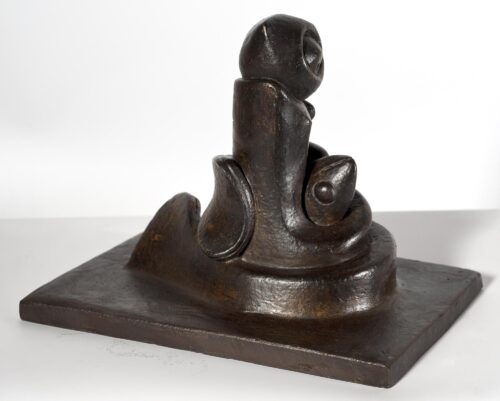
Sea Theme, [1950]
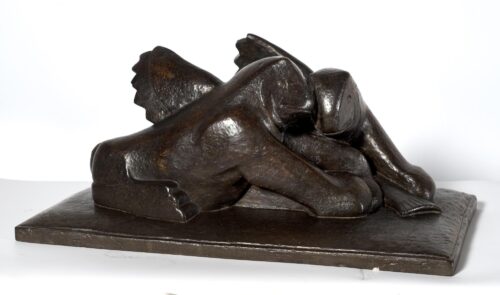
Animals and Fish, 1933
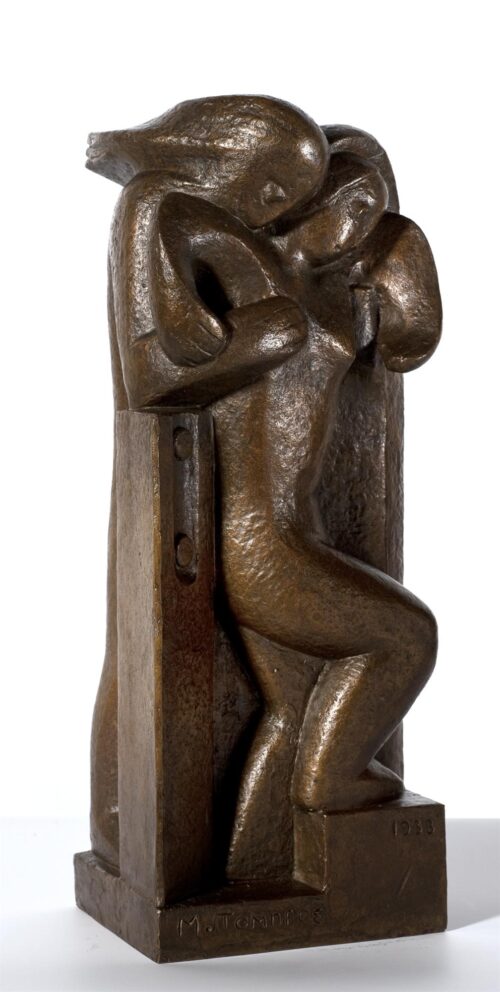
The Kiss, 1933
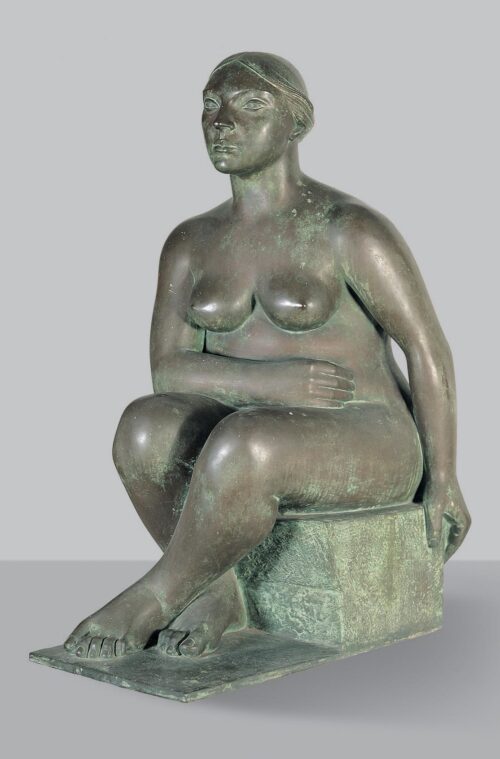
Stout Seated Woman, 1948
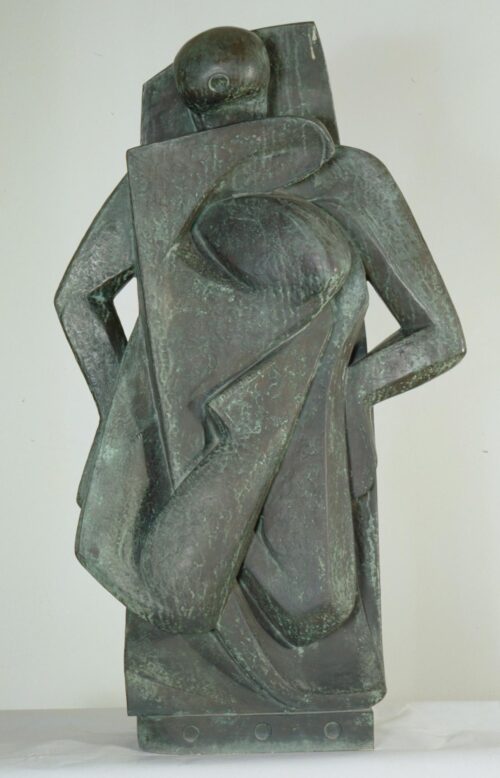
The Elf, 1955
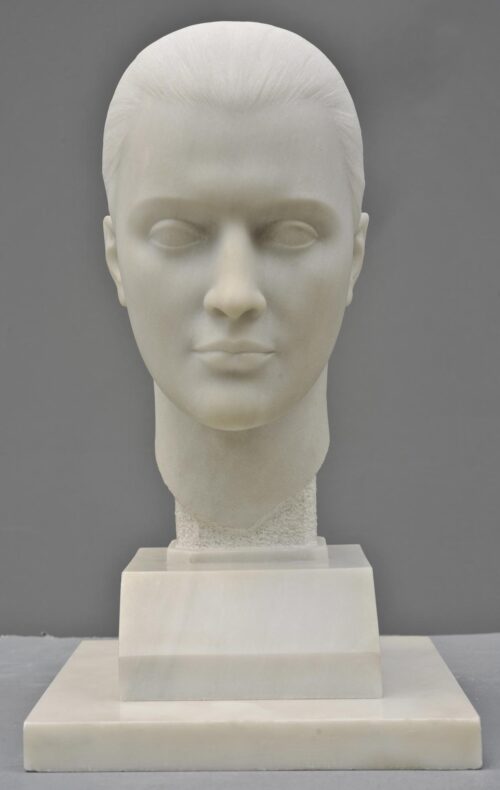
Head of a Girl, 1931

We use cookies to make our site work properly, to personalize content and ads, to provide social media features and to analyze our traffic. We also share information about how you use our site with our social media, advertising and analytics partners. Read the Cookies Policy.
These cookies are necessary for the website to function and cannot be switched off in our systems. They are usually only set in response to actions made by you which amount to a request for services, such as setting your privacy preferences, logging in or filling in forms. You can set your browser to block or alert you about these cookies, but some parts of the site will not then work. These cookies do not store any personally identifiable information.
If you disable this cookie, we will not be able to save your preferences. This means that every time you visit this website you will need to enable or disable cookies again.
These cookies tell us about how you use the site and they help us to make it better. For example these cookies count the number of visitors to our website and see how visitors move around when they are using it. This helps us to improve the way our site works, for example, by ensuring that users find what they are looking for easily. Our website uses Google Analytics for statistics reporting.
Please enable Strictly Necessary Cookies first so that we can save your preferences!